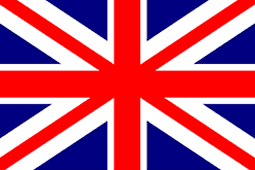Camp Cooking 101: How To Cook While Camping In The UK
Camp Cooking 101: How To Cook While Camping In The UK
Cooking on a campsite shouldn’t mean burnt sausages, lukewarm pasta and a pan full of ash. But between UK campsite rules, fickle weather, limited space and no fridge, it’s easy to feel out of your depth—especially if you’re new to camping or cooking for a family.
The good news: with a simple plan, the right heat source and a box of kit, camp cooking is relaxed, safe and tasty. Learn when to use a stove, fire or charcoal, how to keep food fresh without a fridge, and the techniques that turn ingredients into satisfying meals.
This guide walks you through the process for UK trips: picking where to cook, choosing fuel and wind protection, essential cookware, prep at home, setting up a safe camp kitchen, and methods for stoves, campfires and portable BBQs. You’ll get easy meal ideas, coffee tips, a 3‑day menu, troubleshooting and a packing checklist.
Step 1. Decide where you’ll cook and check UK campsite rules
Before you light a flame, decide exactly where you’ll cook. UK sites vary: some permit campfires only in designated pits, others allow off‑ground BBQs, and some are stove‑only. Never cook in tents, awnings or enclosed shelters—there’s a real fire and carbon‑monoxide risk. Choose a clear, level, well‑ventilated spot, downwind of tents and trees.
- Fire/BBQ policy: Are fires, designated pits and off‑ground BBQs allowed?
- Fuel rules: What’s permitted—wood, charcoal, gas?
- Stove locations: Where can stoves be used; are windshields okay?
- Ground protection: Heat mats/bricks required on grass?
- Waste & water: Grey‑water disposal and food‑waste rules.
Step 2. Choose your heat source: stove, campfire, charcoal or BBQ
Your heat source dictates control, flavour and timing, so match it to site rules, weather and your menu. When learning how to cook while camping, keep it simple: many campers boil or simmer on a stove, then use a fire or BBQ for grilling and that smoky finish.
- Stove (gas/canister or liquid fuel): Fast, controllable and reliable. Great for boiling, simmering and one‑pots, and usually handles wind better with a windshield. Test your stove and fuel at home first.
- Campfire: Only where permitted. Cook over hot coals, not flames, using a grill or foil packets. Amazing flavour, but slower and more variable—plan extra time and manage your fire carefully.
- Charcoal/portable BBQ: Steady, even heat that’s ideal for grilling veg, halloumi and meats. Use off‑ground units and protect grass. Slower to light and cool, but very consistent for family meals.
Step 3. Pick the right cookware and utensils for the job
The right kit makes camp cooking simpler, safer and tastier. Match cookware to your heat source: cast iron thrives on coals and grills, while stainless or hard‑anodised aluminium shines on stoves. Keep non‑stick for gentle stove work and use silicone or wooden utensils. Aim for nesting gear to save space and lids to speed boils and keep ash out.
- Cast‑iron skillet: Bombproof over fires/BBQs; brilliant for searing and one‑pan meals.
- Lightweight lidded pot (2–3L): Boils pasta/rice, simmers stews; a lid saves fuel.
- Folding grill/trivet: Stable platform over coals; protects grass when off‑ground.
- Long tongs + heatproof gloves: Safe control without burned fingers.
- Chopping board + sharp knife (with sheath): Efficient prep and safe packing.
- Spatula/serving spoon/ladle (silicone/wood): Protects non‑stick, handles sauces.
- Foil + zip bags/containers: Foil packets, leftovers and organised ingredients.
- Plates/bowls/mugs (enamel or tough plastic): Durable, light and kid‑friendly.
- Washing‑up kit: Small eco soap, scourer and tea towel for quick clean‑downs.
Step 4. Sort fuel, ignition and wind protection
Fuel planning is the quiet hero of camp cooking. Check your stove’s fuel type and buy it before you travel—propane/butane canisters and other fuels can be tricky to find near rural sites—then bring enough for every meal plus a small buffer. Carry two ways to light up and keep them dry. For wind, cook fully outdoors but out of the breeze: tuck your setup behind natural windbreaks and never in tents, awnings or enclosed shelters. When you’re learning how to cook while camping, this prep stops empty pans and hangry campers.
- Stock up on fuel: Buy before you go and pack extra for weather delays.
- Pack ignition backups: A lighter and matches, stored dry in a zip bag.
- Handle wind smartly: Canister or liquid-fuel stoves cope best in windier conditions.
- Manage fires/BBQs: Start early and cook over hot coals, not flames.
Step 5. Keep food safe without a fridge (cool boxes, freezing, packing)
Food safety is the backbone of how to cook while camping. Use cold storage smartly, separate raw from ready‑to‑eat, and mind the time. As a rule, don’t leave cooked food above fridge temperature for more than about 90 minutes, and when reheating, make sure it’s piping hot before serving.
- Use a cool box: Thermoelectric models can keep food cool for up to two days.
- Freeze before you leave: Meat and meals thaw slowly, buying you safe time on site.
- No cool box? Wrap items tight with ice packs to extend freshness.
- Consider a zeer pot: Effective but bulky—best if you’re near the car.
- Pack cleverly: Coldest is the bottom; put “later” items there and drinks in a separate cool box.
- Seal and separate: Zip bags/Tupperware; keep raw meat away from salads and cooked foods.
Step 6. Plan a simple, balanced menu for your trip
When you’re working out how to cook while camping, keep your menu simple and balanced. Build each meal around a carbohydrate, a protein and a veg/fruit so you’ve got energy for hikes. If you have a cool box, include fresh meat, fish and dairy; without one, lean on tins and dried staples. Choose quick-cook bases (oats, bread, couscous, pasta, quick rice) and straightforward proteins (eggs, tinned tuna, lentils/beans, halloumi), then plan a mix of hot dinners and easy, no‑cook lunches.
- Cook double at night: Turn leftovers into next‑day wraps, salads or soup.
- Pre‑mix seasoning: Small blends lift simple meals without carrying a spice rack.
- Pick one‑pan/fire‑friendly meals: One‑pots for stoves; skewers/foil packs for fire nights.
- Pack smart snacks: Crisps, nuts, granola bars, dried fruit and biscuits keep energy up.
Step 7. Prep at home to save time at camp
Prepping at home is the cheat code for how to cook while camping. A bit of slicing, measuring and packing turns mealtimes into simple assembly, cuts washing‑up, and keeps you inside safe time‑and‑temperature limits without relying on a fridge.
- Pre‑chop hardy veg: Onions, peppers, carrots and potatoes; leave watery veg like tomatoes and cucumbers whole.
- Bottle eggs/batter: Crack eggs into a bottle or jar and keep chilled; pre‑mix pancake batter in a squeezy bottle.
- Marinate and freeze meats: Lock in flavour, extend freshness, and act as extra ice in the cool box.
- Prep foil‑packet dinners: Assemble at home, oil and season, wrap tightly, then chill; test your stove, fuel and pots at home too.
Step 8. Set up a safe camp kitchen (layout, hygiene, kids and dogs)
Think of your camp kitchen as a small outdoor workstation: clear, level and well‑ventilated. Set a stable table or ground trivet for the stove, keep your prep board close, and park the cool box within reach to form a simple heat‑prep‑cold triangle. Keep traffic out of the area—especially kids and dogs—and focus on hygiene to prevent cross‑contamination when you’re learning how to cook while camping.
- Stay stable and ventilated: Put the stove on a firm surface with natural wind protection; never cook in tents, awnings or enclosed shelters.
- Separate “raw” and “ready”: Use distinct boards/knives (or clean between tasks), keep raw meat sealed and away from salads and cooked food.
- Wash hands and kit: Hand gel before prep; use previously boiled water (once cooled) for warm washing‑up to speed cleaning.
- Handle fuel safely: Buy the right fuel in advance, store it upright and away from heat; keep lighters/matches dry.
- Manage kids and dogs: Use a camp table to keep the stove out of reach; set a clear “no‑go” line so no one squeezes past while you cook.
- Control heat safely: Long tongs and heatproof gloves for hot pans; pan lids reduce splatter and keep ash out.
- Tidy as you go: Bag food scraps and store waste securely; follow site rules for grey water and rubbish disposal.
Step 9. Cook on a camp stove: boil, simmer and one-pot meals
Your stove is the workhorse when learning how to cook while camping: fast, controllable and dependable in UK weather. Keep it fully outdoors, use a lid to speed boils and remember that thin camp pots heat quickly—turn the flame down to avoid scorching and stir often. Canister or liquid-fuel stoves handle wind better; position them in a well‑ventilated, sheltered spot and never inside tents or awnings.
- Stove technique: Bring water to a rolling boil with the lid on, then reduce to a gentle simmer. If food spits, lift the pan off briefly and lower the flame.
- Fuel and time savers: Cook double at dinner to cover tomorrow’s lunch; use previously boiled water (once cooled) for washing up.
- Food safety: Chill leftovers promptly in a cool box and reheat until piping hot.
- Easy one‑pots: Tomato pasta with tinned tuna and peppers; couscous with chickpeas and pre‑chopped veg; sausage‑and‑potato hash; ramen boosted with eggs and greens; bean or lentil stew with quick rice.
Step 10. Cook over a campfire: coals, grills and foil packets
Campfire cooking delivers big flavour but needs patience and control. Only cook where permitted, build on clear ground, and cook over coals, not flames. A simple grill or cast‑iron pan adds stability, while tightly wrapped foil packets act like a tidy little oven.
- Build heat: Burn wood down to a coal bed (~1 hour). Hand test at 7 inches; if you pull away after a few seconds, it’s ready.
- Stable grill: Set a BBQ grate on legs/bricks and spread coals evenly for steady heat.
- Foil packets: Oil the foil, add seasoned meat/fish/veg, seal tightly, bury in coals; turn and check periodically.
- Skillet one‑pots: Use cast iron for searing; add beans or sauce for hearty, low‑effort meals.
- Safety: Keep water/sand nearby, never cook under shelters, and extinguish completely per site rules before you leave the area.
Step 11. Cook with charcoal or a portable BBQ: steady heat, easy grilling
Charcoal and portable BBQs are brilliant for steady, even heat and hands-off cooking—ideal when you’re figuring out how to cook while camping without fuss. Use off‑ground units, protect the grass, and give yourself time: they’re slower to light and to cool. Cook when coals are glowing and grey, then use the lid and vents to control temperature; a simple two‑zone setup adds control.
- Preheat and clean: Hot, clean grates; lightly oil to reduce sticking.
- Two zones: Sear hot, finish cooler by banking coals to one side.
- Easy wins: Veg, halloumi, skewers, pre‑cooked sausages and flatbreads.
- Foil on edges: Potatoes or fish parcels away from direct heat.
- Safe handling: Long tongs, gloves, no shelters, water/sand nearby; cool and dispose of ash per site rules.
Step 12. Brew great coffee and hot drinks outdoors
A good brew lifts a damp UK morning. Use a stove for control, and never brew in tents, awnings or enclosed shelters. Boil with a lid, then brew off‑heat to avoid scorching. Here’s how to brew outdoors when you’re learning how to cook while camping:
- Cowboy coffee: Grounds in water, brief boil, pour; let settle and skip the last inch.
- Pour‑over cone: Filter over mug, pre‑wet, add grounds, slow‑pour just‑off‑boil water.
- Easy wins: Tea bags, hot chocolate and instant coffee sachets for wild, wet evenings.
Step 13. What to cook when camping: easy UK-friendly meal ideas
Short and comforting beats fancy when you’re figuring out how to cook while camping. Aim for meals that use one pan, simple seasonings and common UK staples, and mix stove dinners with the occasional fire or BBQ night. Cook double where you can and turn leftovers into easy wraps or salads.
- One‑pan cooked breakfast: sausages, bacon, tomatoes, eggs, beans.
- Porridge on the stove: oats with jam, nuts or fruit.
- Toasted sandwiches: cheese, ham or tuna; fry in a pan.
- Tuna & sweetcorn pasta: stove one‑pot with tomato sauce.
- Chickpea & veg curry: quick rice on the side.
- Halloumi & veg skewers: grill over BBQ/coals until golden.
- Jacket potatoes in coals: top with beans and cheese.
- Fish foil parcels: lemon, herbs; add seaweed if by the coast.
- S’mores‑style treat: biscuits + chocolate + toasted marshmallows.
Step 14. Deal with wind, rain and cold weather cooking
UK weather changes fast, so build your plan around control, not heroics. Pick a naturally sheltered, fully outdoor spot, keep flames small and predictable, and simplify your menu. Lids save fuel, keep rain and ash out, and help maintain a steady simmer. If the forecast turns grim, prioritise one‑pot stove meals and cook double so tomorrow’s lunch is already sorted.
- Don’t cook in confined spaces: Never in tents, awnings or under enclosed shelters due to fire and carbon‑monoxide risk.
- Handle wind smartly: Canister or liquid‑fuel stoves cope best; tuck behind natural windbreaks and use a lid.
- Rain rules: Light drizzle is a nuisance; heavy rain spoils food and snuffs flames—avoid if possible and keep pots covered.
- Use safe windbreaks: Shield the flame with your body, pack, coat or a tarp as a windbreak while staying fully outdoors and well‑ventilated.
- Time and fuel buffers: Start earlier, allow slower boils, and cook extra portions to reduce repeat exposure to bad weather.
Step 15. Wash up and dispose of waste the Leave No Trace way
Good washing-up keeps wildlife away, stops smells and protects streams. Do it fully outdoors, keep it quick and tidy, and follow Leave No Trace principles. Use hot (not scalding) water to speed the job, and think about where the wastewater and scraps end up before you start.
- Set up three buckets: Warm rinse, then soapy wash, then clean rinse for a final dip.
- Pre‑scrape plates: Wipe grease with paper, bin it; fewer suds, faster cleaning.
- Use hot leftovers: Reuse recently boiled water (cooled slightly) for washing up.
- Eco soap, sparingly: A little goes a long way; avoid streams entirely.
- Strain grey water: Pour through a fine mesh; pack out food bits or bin on site.
- Dispose correctly: Use campsite sinks/grey‑water points; otherwise dump at least 60m/200ft from water and well away from camp.
- Air‑dry smart: Hang dishes in a mesh bag; keep sealed rubbish away from animals.
Step 16. Troubleshooting common camp cooking problems
Even with a solid plan, camp kitchens throw curveballs. Stay calm, think safety first and use small tweaks to regain control. These quick fixes are grounded in the basics you’ve learned: cook fully outdoors, favour steady heat, use lids, and keep your setup stable and organised.
- Wind kills flame: Move to a sheltered outdoor spot; use a lid; prefer canister/liquid-fuel stoves.
- Pan scorching: Lower the flame, stir often, add a splash of water; cook over coals, not flames.
- Food sticks to grill: Preheat and clean grates; lightly oil the grate or food; don’t flip too early.
- Coals too hot/cool: Wait for grey coals, spread evenly; bank for a hot/cool two‑zone setup.
- Running low on fuel: Switch to no‑cook meals (wraps, beans, tuna); cook once, eat twice.
- Undercooked or unsafe: Cut smaller pieces, cover with lid/foil to trap heat; reheat leftovers until piping hot.
Step 17. A sample 3-day camping menu and shopping list
Use this 3‑day plan to keep meals balanced, quick and weather‑proof. It mixes stove one‑pots with a BBQ and a campfire night, and builds in leftovers for easy lunches. Scale portions to your group and swap proteins to suit.
-
Day 1: Breakfast—porridge with jam; Lunch—cheese and salad wraps; Dinner (stove)—tuna and sweetcorn tomato pasta (cook extra).
-
Day 2: Breakfast—one‑pan cooked breakfast; Lunch—pasta salad with peppers; Dinner (BBQ)—halloumi and veg skewers, pittas, corn.
-
Day 3: Breakfast—pancakes from a squeezy bottle; Lunch—ham/cheese toasties; Dinner (campfire)—chickpea and veg curry with quick rice; s’mores.
-
Cold: sausages or bacon, eggs, halloumi, milk, butter.
-
Ambient/tins: oats, pasta, quick rice, chickpeas, beans, tuna, passata.
-
Bakery/grains: wraps, pittas, bread, biscuits.
-
Produce: onions, peppers, tomatoes, carrots, potatoes, salad.
-
Seasoning & extras: oil, salt/pepper, spice blend, jam, tea/coffee, crisps, marshmallows, foil.
Step 18. A quick packing checklist for your camp kitchen
Keep your camp kitchen compact and organised by packing in “zones”: heat, prep, cold food, serve and clean. This quick checklist covers the essentials for how to cook while camping in the UK, fitting neatly into one crate plus a cool box so you can set up and start cooking fast.
- Heat + fuel: Stove with correct fuel; permitted firepit/BBQ; charcoal/wood if allowed.
- Ignition: Lighter and matches, both kept dry in a zip bag.
- Core cookware: Lidded 2–3L pot; sturdy/cast‑iron skillet; folding grill/trivet.
- Utensils: Long tongs, spatula, serving spoon/ladle, heatproof gloves.
- Knife & board: Sharp knife with sheath and a chopping board.
- Eat & drink: Tough plates/bowls/mugs and cutlery.
- Cold storage: Cool box with ice packs; sealable tubs/zip bags; heavy foil.
- Seasoning & oil: Small oil bottle; pre‑mixed salt/pepper/spice packets.
- Hot drinks kit: Kettle/small pot with lid; tea/coffee/hot chocolate.
- Clean-up: Eco soap, scourer, tea towel, 3 buckets/bowls, mesh strainer.
- Waste: Rubbish bags; store scraps sealed; follow site grey‑water rules.
- Safety & site care: Ground/heat protection (bricks/mat), water/sand for fires.
Ready to cook outdoors
You’ve got the plan, the kit and the confidence: pick a safe spot, choose the right heat, keep food cold, cook simple one‑pots or grill over coals, and wash up the Leave No Trace way. That’s how to cook while camping without stress, even when the UK weather throws a curveball.
Pack your crate tonight, test your stove, pre‑mix a spice blend and freeze a dinner for night one. Then relax—your camp kitchen is sorted. If you need dependable stoves, cool boxes, cookware or finishing touches, you’ll find them at take a hike uk. See you round the fire.















